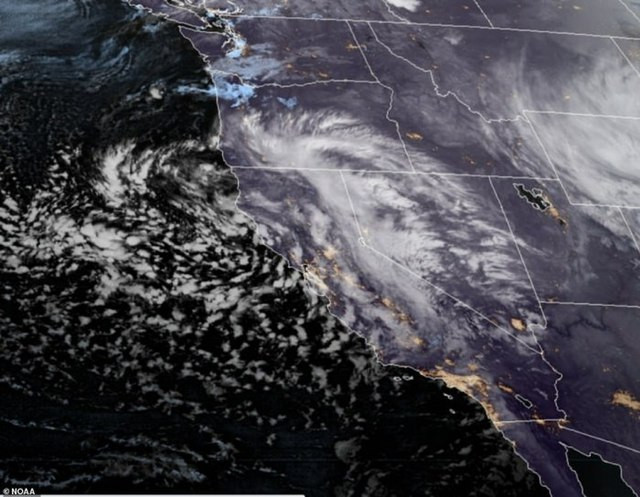Torrential rains have unleashed widespread flooding across California, placing nearly the entire state's population under flood alerts as officials scramble to manage the escalating crisis. The deluge, which has particularly battered Southern California, prompted urgent warnings for residents to avoid travel due to heightened risks of flooding and landslides.
Santa Barbara and Ventura counties were among the first to bear the brunt of the storm's fury, with flash flood warnings issued early Monday as 3 to 6 inches of rain pounded coastal areas and up to 8 inches drenched the foothills. By afternoon, the relentless rainfall shifted towards the greater Los Angeles area, exacerbating the situation.
The National Weather Service in Los Angeles reported "numerous instances of flooding and rock and debris flow" across the state, leading to several road closures, including parts of the Santa Barbara Airport, which announced an indefinite shutdown due to "significant flooding."
In San Luis Obispo County, swift water rescue teams successfully extricated two individuals from a vehicle submerged in floodwaters, underscoring the perilous conditions on the roads. The severe weather also brings a rare risk of thunderstorms to California's Sacramento Valley, a phenomenon not seen since February 2015, with potential for damaging winds, hail, and even tornadoes.
In anticipation of the storm, Santa Barbara County officials had issued evacuation warnings for vulnerable areas over the weekend, with similar precautions taken in parts of southwestern Los Angeles County due to fears of mud and debris flows.
The atmospheric river fueling this relentless storm is expected to persist off the West Coast, with the Weather Prediction Center issuing excessive rain outlooks for much of California through Tuesday. While the heaviest downpours may become more isolated, the saturated ground from continuous rainfall heightens the risk of further flooding.
Los Angeles, facing a significant flood risk, could see 2 to 5 inches of rain, with isolated areas in the Santa Lucias and Santa Ynez ranges receiving up to 10 inches. This deluge threatens to make February one of the wettest months on record for Los Angeles, following a historically rainy early February also driven by an atmospheric river.
Authorities have issued warnings for potential mudslides and debris flows, particularly in areas recently scarred by wildfires. In Northern California, the earlier weekend storm triggered a rock slide that closed a section of U.S. Highway 101 in Del Norte County.
San Francisco, under a Level 2 flood risk, has taken proactive measures by distributing sandbags to residents and businesses in anticipation of "excessive runoff from moderate to heavy rain." The Bay Area has already accumulated significant rainfall, with coastal terrain receiving 2 to 3.5 inches from Friday night to Monday morning.
As the state braces for continued adverse weather, emergency services remain vigilant, with the main storm expected to move eastward into the Rockies by late Wednesday, finally bringing some respite to the beleaguered region.






